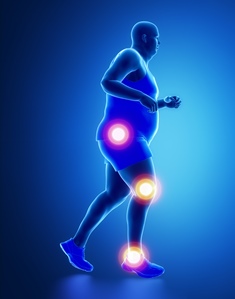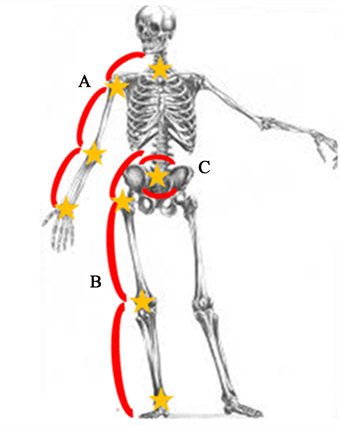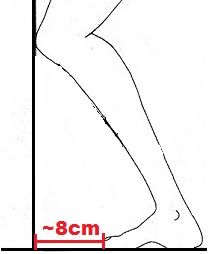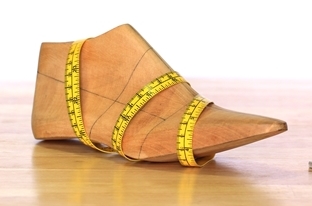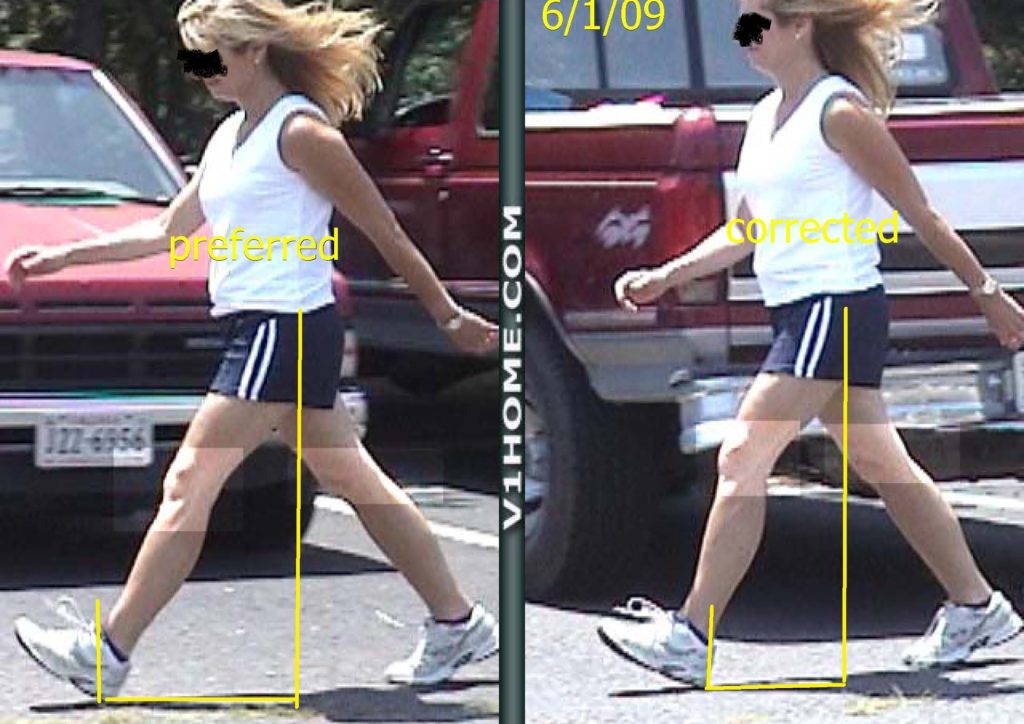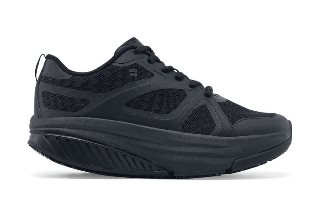Foot & Ankle
Symptom modification of painful gait
Symptom modification procedure is common practice in the Physical Therapy profession. This procedure involves identifying the specific movement, posture, and/or activity that reproduces the patient’s symptoms. Historically diagnosis of musculoskeletal problems was based on examination which selectively provoked musculoskeletal tissues by compressing or stretching the various tissues to provoke the symptoms. This provided direction for…
Read MoreHow to exercise to lose weight when exercise is painful
High body mass index (BMI) is significant factor in low back pain, osteoarthritis; hip osteoarthritis; knee osteoarthritis, plantar heel pain. Weight loss intervention for pain reduction Decreasing body weight is an effective intervention to decrease musculoskeletal pain. Research by Stephen Messier at Wake Forest U, looking at individuals with painful osteoarthritis of the knee who…
Read More“Deme Bones” – Regional interdependence
The common reframe from the old spiritual song “dem bones” is the “toe bone is connected to foot bone”. In the medical community this concept of mechanical connectiveness is referred to as “regional interdependence”. Regional interdependence is seemingly unrelated impairments in remote anatomical regions of the body may contribute to and be associated with a…
Read MoreShoe drop – how the pendulum swings
Put on your high-heel sneakers, Lordy Wear your wig-hat on your head Put on your high-heel sneakers, child Wear your wig-hat on your head Ya know you’re looking mighty fine, baby I’m pretty sure you’re gonna knock ‘em dead – Tommy Tucker Growing up in the 1960s, I remember the song, “Put on Your High-Heel…
Read MoreThat’s a Stretch: Why Stretching May Not Always be the Solution
It’s good to stretch a dollar. It’s bad to stretch the truth. But what about stretching your calves? That might depend on whether you believe Dr. Google every time a search result says to stretch sore calves. Calf stretching aims to increase the range of motion (ROM) for ankle dorsiflexion. “Dorsi” is a prefix meaning…
Read MoreKeeping the Spring in Your Step: Ankle Joint Power & Aging
http://bit.ly/DAMIEN25 As we amass more birthdays and get older we tend to walk/run slower, take shorter steps, and fewer per minute. Why do we seem to have less spring in our step the older we get? Kids move fast and crash elderly move slow and crash. One factor is kids have good ankle power elderly…
Read MoreCan Isometric Exercise Help Plantar Heel Pain: What is Best Joint Position?
Anyone who has had tendon pain will tell you it is a frustrating problem to resolve. Common repetitive use tendon problems include: plantar heel pain; Achilles; patellar (knee) tendon; hamstring tendon; gluteal (buttock pain) tendon; rotator cuff (shoulder) syndrome; and tennis elbow. Tendon problems take a long time to heal. Understanding the continuum of tendon…
Read MoreShoes too big for foot contributes to injury
A majority of all people are in shoes that are incorrect shoe size according to Fawn Evenson director of the Footwear Industries of America. There are two potential errors when selecting what size shoes to wear. Either the shoe will be too small for the foot or too large for the foot. In my experience…
Read MoreCuing to Alter Gait Deviation of Too Long a Step
Cuing to Alter Gait Deviation of Too Long a Step Mathematics helps explain walking or running faster. Step length X steps per minute = speed. In order to move faster there are 3 opportunities take longer steps or strides, increase the steps/minute (cadence), or do both longer steps and a faster cadence. Taking longer steps/stride…
Read MoreShoe Soles: Stiff Rocker Bottom Sole versus Flexible Sole “Barefoot”
There are many things to consider when selecting shoes, including comfort, injury and energy expenditure. Arnie Davis a Certified Pedorthotist has coined the term shoes with rocker bottom soles are the proverbial “aspirin” for chronic foot problems. A rocker sole shoe is recommended to help manage a number of painful injuries including: low back pain;…
Read More

